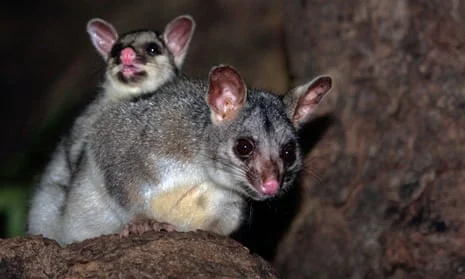
Threatened Species at Risk as Middle Arm Development Looms
In a significant and concerning development, a leaked environmental assessment has revealed that two threatened mammal species could face extinction due to a proposed industrial project at Darwin harbour. Valued at $1.5 billion in federal funding, the Middle Arm development has stirred alarm among conservationists who argue that its impact on local ecosystems could be catastrophic.
The proposed Northern Territory governmental initiative includes the construction of wharves and jetties serving various industries, particularly liquefied natural gas and critical minerals. Conservation advocates emphasize that the project "shouldn’t get past the starting gun based on impacts to nature,” highlighting the need for stringent environmental considerations.
According to the draft environmental impact statement (EIS), not yet made public but reviewed by Guardian Australia, the development is set to profoundly affect several species, namely the black-footed tree-rat and the northern brushtail possum. Both are nocturnal mammals classified as at risk of extinction, residing primarily in woodlands targeted for clearing in the development area.
The assessment suggests that if over 1,000 hectares are cleared, the black-footed tree-rat could lose 78% of its habitat, while the northern brushtail possum could suffer a 70% decline in available living space. Experts predict that the fragmentation of their remaining habitat would make survival untenable for these species on Middle Arm peninsula. Kirsty Howey, executive director of the Environment Centre NT, remarked, "It’s pretty gobsmacking in terms of the impacts on nature," emphasizing the project's ecological repercussions.
Despite urgent calls for action, a Labor campaign spokesperson stated that environmental impact studies are still ongoing, and no governmental approvals have been granted yet. They assured the community that assessments would be thorough before any formal progression occurs. Opponents remain unconvinced, arguing that the community's concerns are not being given adequate weight.
In a contrasting perspective, a spokesperson for the NT CLP government assured that the draft assessment is still subject to refinement based on scientific data. They insist that a rigorous environmental assessment process is being adhered to, though local opinions vary widely regarding the project’s potential repercussions.
Professor Euan Ritchie, a wildlife ecology expert at Deakin University, warned that destroying crucial habitats would significantly increase the risk of local extinctions for both threatened species. Moreover, he noted that such actions could lead to a substantial loss of genetic diversity in the region, further threatening ecological stability.
As the debate intensifies, community reactions suggest a growing frustration with yet another project poised to jeopardize the fragile balance of the Northern Territory’s environment. Phil Scott, an independent candidate, echoed this sentiment, asserting that the government may be underestimating public outrage about the potential harm to native species and the lack of community consultation.
Ultimately, the Middle Arm development project has become a litmus test for environmental stewardship in Australia. Will the balancing act of economic growth and ecological preservation be successfully navigated? The stakes are undeniably high, and the future of these threatened species hangs in the balance.